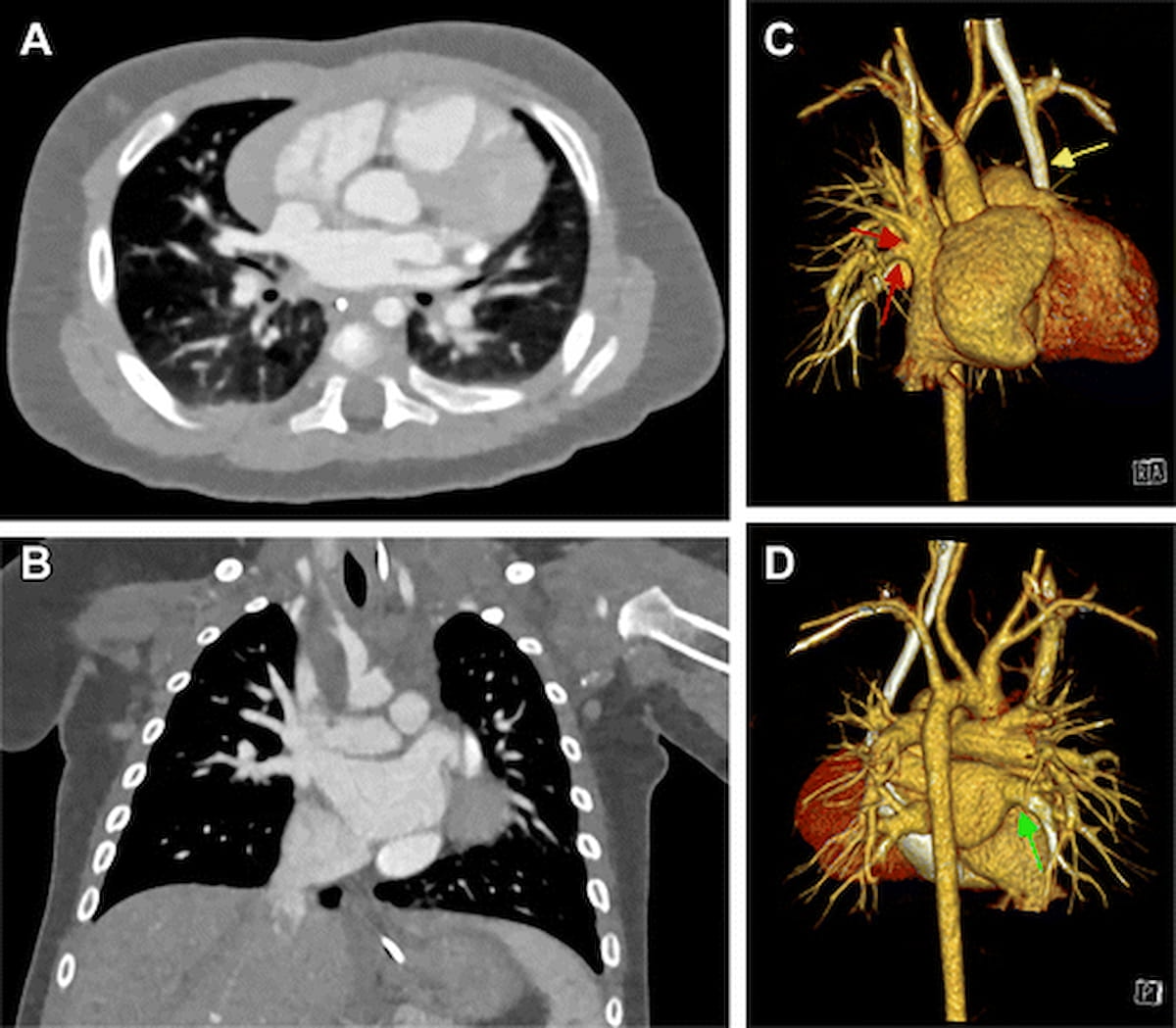Can Photon-Counting CT Have an Impact in Diagnosing Congenital Heart Defects in Young Children?
Photon-counting computed tomography (PCCT) significantly increased the signal-to-noise ratio (SNR) and the contrast-to-noise ratio (CNR) in comparison to dual-source CT (DSCT) at similar radiation dosing, according to a new study of over 100 children with suspected congenital heart defects.
For the imaging of children with suspected congenital heart defects, emerging research suggests that contrast-enhanced photon-counting computed tomography (PCCT) provides significantly higher signal-to-noise and contrast-to-noise ratios (CNRs), and overall higher imaging quality in comparison to contrast-enhanced dual-source CT (DSCT).
For the prospective study, recently published in Radiology, researchers compared imaging quality between PCCT (30 exams) and DSCT (84 exams) in 113 children suspected of having congenital heart defects. In addition to comparing signal-to-noise ratio (SNR) and CNR, the study authors performed blinded assessments of image quality, ranging from image sharpness and delineation of vessels to motion artifacts and quality of three-dimensional (3D) image reconstructions with a scale of 1 (poor) to 5 (excellent).
Using similar radiation doses for PCCT (.50 mSv) and DSCT (.52 mSv), the study authors found that PCCT was associated with significantly higher SNR (46.3 vs. 16.3) and CNR (62.0 vs. 50.3) than DSCT. The researchers also noted that PCCT had a higher overall mean image quality rating of 4.17 in comparison to 3.16 for DSCT. Moderate or higher image quality scores were reported for 97 percent of PCCT exams in comparison to 77 percent of DSCT exams, according to the study.
Timm Dirrichs, M.D., the lead author of the study, said PCCT offers unique advantages with improved visualization in this patient population.
“Small anatomic structures (e.g. coronaries or pathologies such as patent ductus arteriosus or ventricular septal defects) are challenging to visualize in small children, especially at typical heart frequencies of > 120. (These need the) highest possible spatial and temporal resolution,” pointed out Dr. Dirrichs, a senior physician and specialist in cardiothoracic radiology in the Department of Diagnostic and Interventional Radiology at RWTH Aachen University Hospital in Aachen, Germany.
“Higher SNR and CNR (provide) sharper images and (facilitate) 3D reconstructions of higher image quality. Surgeons need highest resolution if tools like virtual reality glasses are used for surgical planning. On the other hand, in greater anatomic structures, like visualization of the aorta thoracica, spatial resolution could be slightly lowered to reduce radiation dose. PCCT provides improved image quality and/or reduced radiation dose.”
Here one can see cardiac photon-counting computed tomography (CT) images and subsequent anterior and posterior three-dimensional reconstructions for a 174-day-old male infant with a congenital heart defect. (Images courtesy of Radiology.)

(Editor’s note: For related content, see “Could Photon Counting Reduce Iodinated Contrast Media for CT Angiography?,” “Large Multinational Study Shows Link Between CT Radiation Exposure and Brain Cancer in Children and Young Adults” and “CT Update: FDA Changes Course on Post-ICM Thyroid Monitoring in Young Children.”)
Dr. Dirrichs, who has used PCCT since November 2021, said PCCT can provide a viable alternative given the challenges with conventional CT and magnetic resonance imaging (MRI) for young children.
“The main challenge of MRI is the examination duration (approximately more than 30 minutes), which often requires general anesthesia. Anesthesia is a risk for small children, regarding cardiovascular risks and delayed brain development in the case of repeated examinations. (Another) problem is motion artifacts due to children’s restlessness during such a long examination,” noted Dr. Dirrichs.
“CT is far faster (mostly < one minute examination time), but CT always means radiation exposure. If dose is lowered in conventional CT, the spatial resolution gets worse, maybe insufficiently low. Due to its new detector technology, PCCT offers the possibility to reduce the dose at a consistent image quality level, or to achieve a higher image quality at a consistent dose level. Both are beneficial in children.”
In regard to study limitations, the researchers conceded that the study was not powered to compare the diagnostic accuracy of PCCT and DSCT. They also noted that PCCT exams were conducted at 90 kVp, the lowest available tube voltage during the study period, in contrast to recommended tube voltages between 70 and 80 kVp for DSCT exams.
What is the Best Use of AI in CT Lung Cancer Screening?
April 18th 2025In comparison to radiologist assessment, the use of AI to pre-screen patients with low-dose CT lung cancer screening provided a 12 percent reduction in mean interpretation time with a slight increase in specificity and a slight decrease in the recall rate, according to new research.
Can CT-Based AI Radiomics Enhance Prediction of Recurrence-Free Survival for Non-Metastatic ccRCC?
April 14th 2025In comparison to a model based on clinicopathological risk factors, a CT radiomics-based machine learning model offered greater than a 10 percent higher AUC for predicting five-year recurrence-free survival in patients with non-metastatic clear cell renal cell carcinoma (ccRCC).
Could Lymph Node Distribution Patterns on CT Improve Staging for Colon Cancer?
April 11th 2025For patients with microsatellite instability-high colon cancer, distribution-based clinical lymph node staging (dCN) with computed tomography (CT) offered nearly double the accuracy rate of clinical lymph node staging in a recent study.